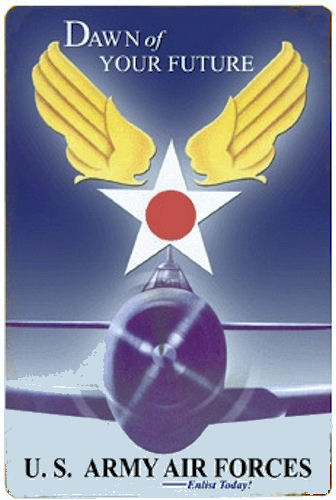Portrait of a WWII veteran
- Ashley Webb

- Nov 10, 2020
- 3 min read
I'm deviating a little from my monthly fashion photographs to showcase a World War II portrait.

This nameless gentleman was a part of the United States Army Air Force, the successor of the Army Air Corps, but also the predecessor of today's Air Force. The Army Air Force (AAF) was

a part of the United States Army until just after WWII, before separating and becoming its own equal unit of the Air Force in 1947. It's characteristic shoulder insignia was based on the 'V for victory' popularized by Winston Churchill.
The Army Air Force began recruiting for WWII in 1942. At the end of 1941, there were a little over 354,100 men that joined the AAF, and by the same time in December of 1942, the number quadrupled in size, mostly as a result of the actions at Pearl Harbor. Actor and Lieutenant Jimmy Stewart helped propel 150,000 new recruits toward the AAF with a short documentary called Winning your Wings on why enlisting with the AAF was so important.
In addition to Pearl Harbor and Jimmy Stewart, propaganda posters helped spur boys of all ages to enlist and fight.

Unlike many of the other branches of the military, there wasn't a branch for women to join the air force. There was the Women's Airforce Service Corp (WASP), but they were federal civil service volunteers, and not considered enlisted or military. And despite this, these women were an integral part of the AAF: they tested aircrafts, ferried aircrafts from the manufacturing facilities to military bases, and trained new pilots so the men could be released for combat
oversees. Their uniform was an afterthought, unlike the United States Women's Naval Reserve (better known as WAVES) who had fashion house Mainbocher create their winter, summer, and spring looks. Instead, the WASPs were relegated 'Zoot Suits' - army issued coveralls that only came in men's sizes, with the smallest size being 44 long. They were expected to supply their own khaki pants and white blouses for when Generals visited the fields. In 1943, the WASP director Jacqueline Cochran cornered General Hap with the declaration that the girls have should have their own dress uniforms.
After being offered 40,000 yards of unflattering olive drab wool, Cochran took the matter in to her own hands, consigning the services of Bergdorf Goodman in New York to design a pleasing uniform out of Santiago blue wool gabardine - the blue associated with the Air Force today. Bergdorf made two uniforms: one out of the blue, and one out the olive. When the Generals made the final choice for the WASPS, Cochran chose a French model to wear the Santiago blue uniform, while the olive was worn by the Quartermaster Corps clerk. Needless to say, the blue uniform one out. Nieman Marcus in Texas personally fit each WASP graduate between 1943 and 1944.
Unfortunately, although women were allowed to participate in these flight programs during the war, the program was short lived. One historian noted the inequality of the time: "It was unacceptable to have women replacing men. They could release men for duty — that was patriotic — but they couldn't replace men." In 1944, two short years after the program started, the WASP program was disbanded, and their service forgotten by the Air Force. It wouldn't be until 1977 that the 1,102 women who flew under the WASP would receive a veteran distinction.
The Library of Congress collected a number of WASP veteran stories starting in 2003, and has excerpts of interviews conducted - all of whom absolutely loved being in the air and being able to do something for their country. I encourage you to check out each of their stories, along with the many other interviews in the Library of Congress' Veterans History Project.

Although I know nothing about this veteran other than that he enlisted sometime between 1942 and 1943, and that he was part of the Army Air Force, his bravery, honor, and sacrifice lives on today. If you served or are currently serving - whether it be the Army, Navy, Air Force, Marines, Coast Guard, or the Space Force, thank you for your service so America can continue to be free.
































Comments